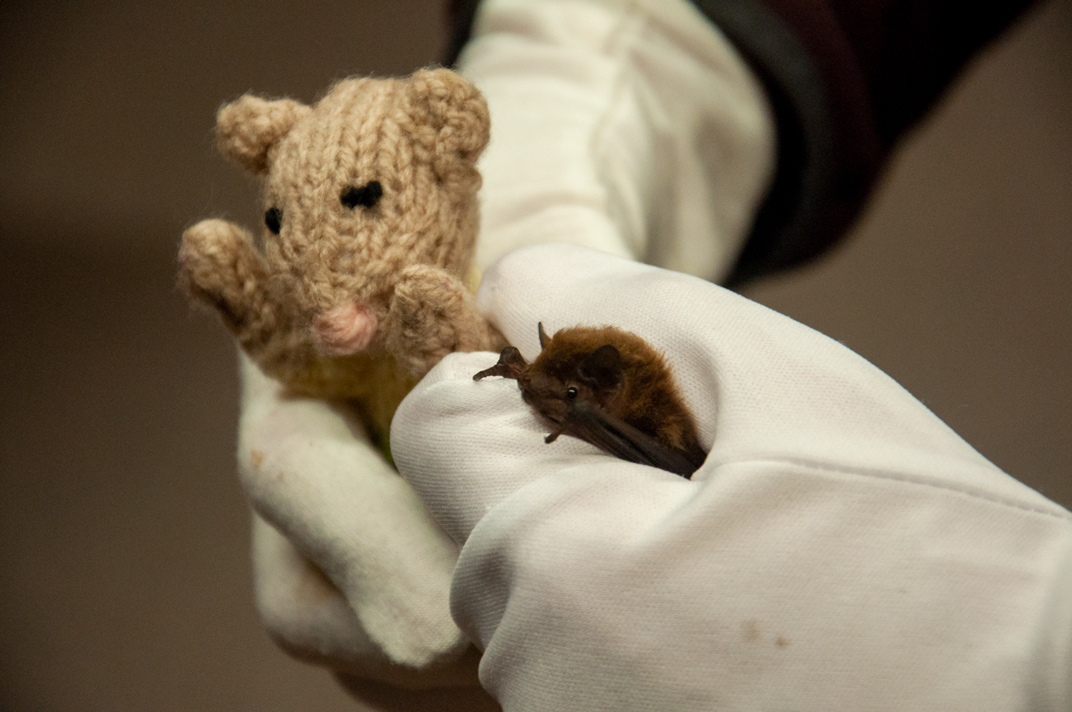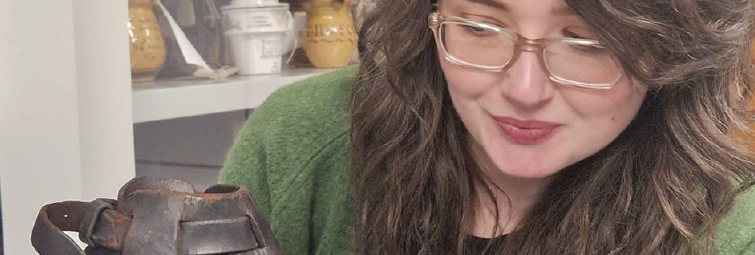So we found a live bat in our archive
-
Author
- josefinabravo
-
Published Date
- February 24, 2019

<
Luckily, we have former University Librarian Rose-Ann Movosvic spending every Thursday volunteering at The MERL Library, but even luckier is that she also devotes the rest of her week to bat conservation. Here’s the story of how she saved a bat that got stuck in our rare book store: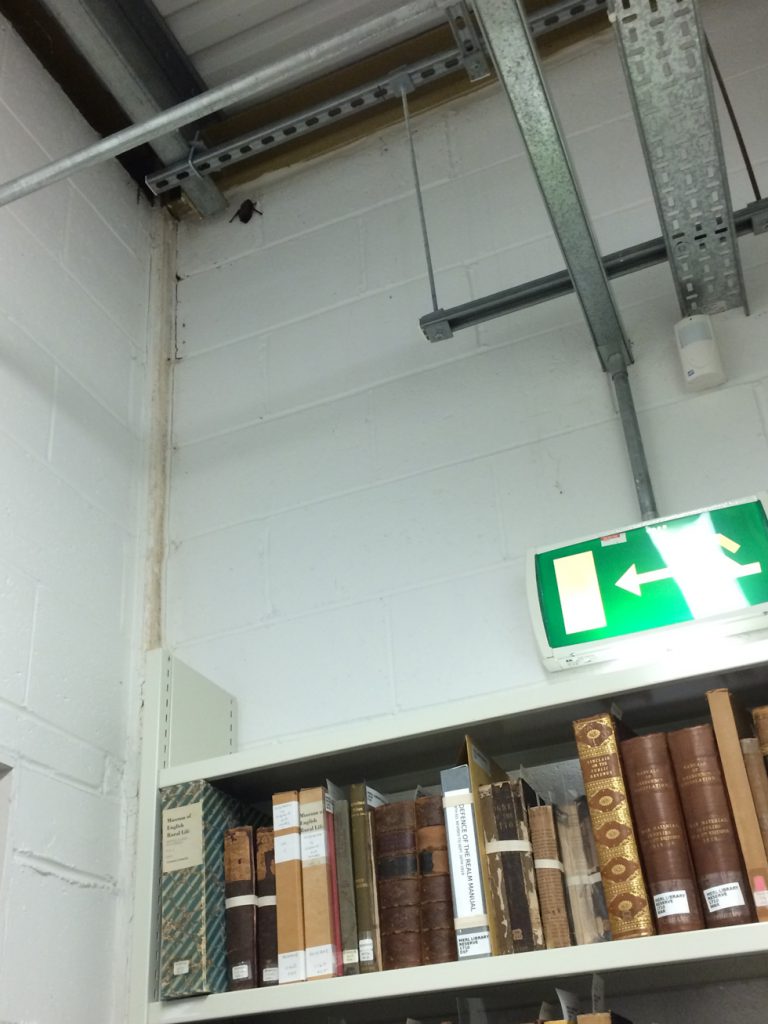
When a bat turned up in the UMASCS rare book store late Friday afternoon several colleagues emailed me.
However, there was not much to be done at that point apart from hoping it would still be there on Monday morning – if it couldn’t be found, there would be a concern that it had hidden away somewhere to die (not a pleasant thought).
Happily, on Monday morning someone from the Museum got through to us again through the Bat Conservation Trust’s national bat helpline (0345 1300 228), the bat hadn’t moved or got itself killed, and it had been safely contained by The MERL conservator. We arrived to check it over and found, to our excitement, that it looked like a Nathusius’ Pipistrelle, rather than the expected Common Pipistrelle or Soprano Pipistrelle. The Nathusius is slightly larger than the other pipistrelle species and, as one of the diagnostic features is a penis that looks like a tiny, albino hedgehog, it being a male gave us an extra clue.

First things first, we gave him rehydration fluid as he was very thirsty, having probably been trapped in the store for a few days at least. Fortunately, he was completely uninjured. We had a look round the outside of the building to try and see how he might have got in but with no windows, no doors to the outside, no louvres or obvious ventilation shafts we couldn’t spot anything. However, as a bat can get through a gap as small as a couple of centimetres and it’s a huge building, it can be almost impossible to find an access point if you don’t actually observe the bat going in or out.
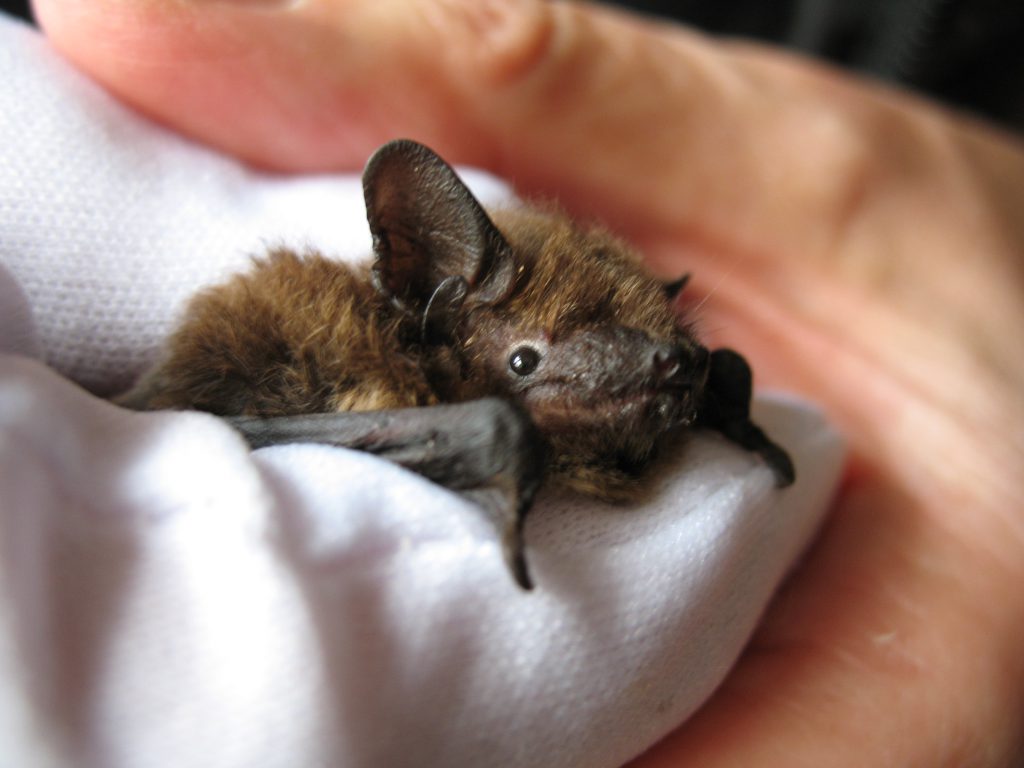
When we got him home, having decided to call him MERLin, we checked the other diagnostic features – wing venation and ratio of forearm to 5th finger. Both these were definitive so we were sure about our identification.
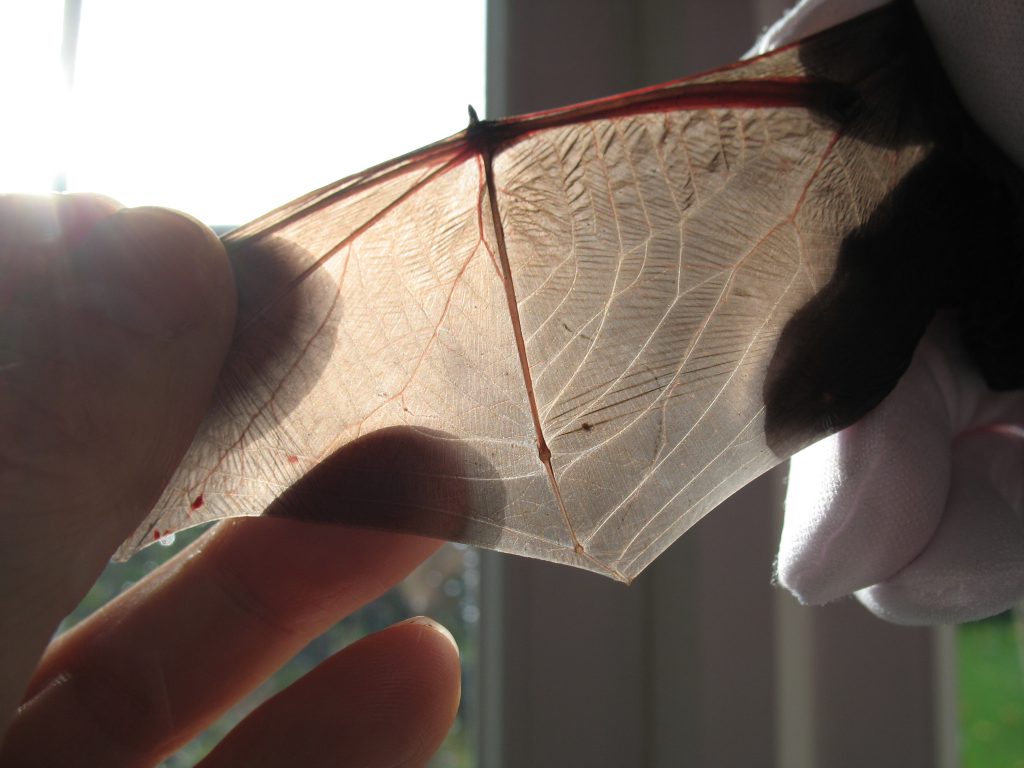
Merlin weighs just 7g, which is a reasonable weight in the middle of summer when there is plenty of insect prey around, but he needs to be around 25% heavier for the start of the hibernation period. Bats go into torpor or deep sleep when there is no food, which can be four-five months, so they need to put on lots of weight in the autumn. If we can get him to put on two grams more weight in a couple of weeks we will release him on a mild evening in the MERL garden so he will know where he is. If he doesn’t put on the weight quickly enough we will keep him over winter, in company with the other rehabilitating bats and the unreleasable educational bats we keep under licence, and release him in the spring.
Nathusius’ pipistrelle
So, why were we so pleased to find Merlin is a Nathusius’ pipistrelle?
Well, firstly, 90% of the bats we rescue and rehabilitate are common or soprano pipistrelles so anything different is already quite exciting. However, the Nathusius’ pipistrelle is both rare and little understood – until the 1990s it was believed to be a vagrant or occasional visitor to the UK but now we know that it is a largely migratory species. Most Nathusius’ pipistrelle bats are born in the Baltic states or further north and/or east and then migrate south and west along the Baltic and North Sea coast to spend the winter in Germany, the Netherlands, Belgium or France.
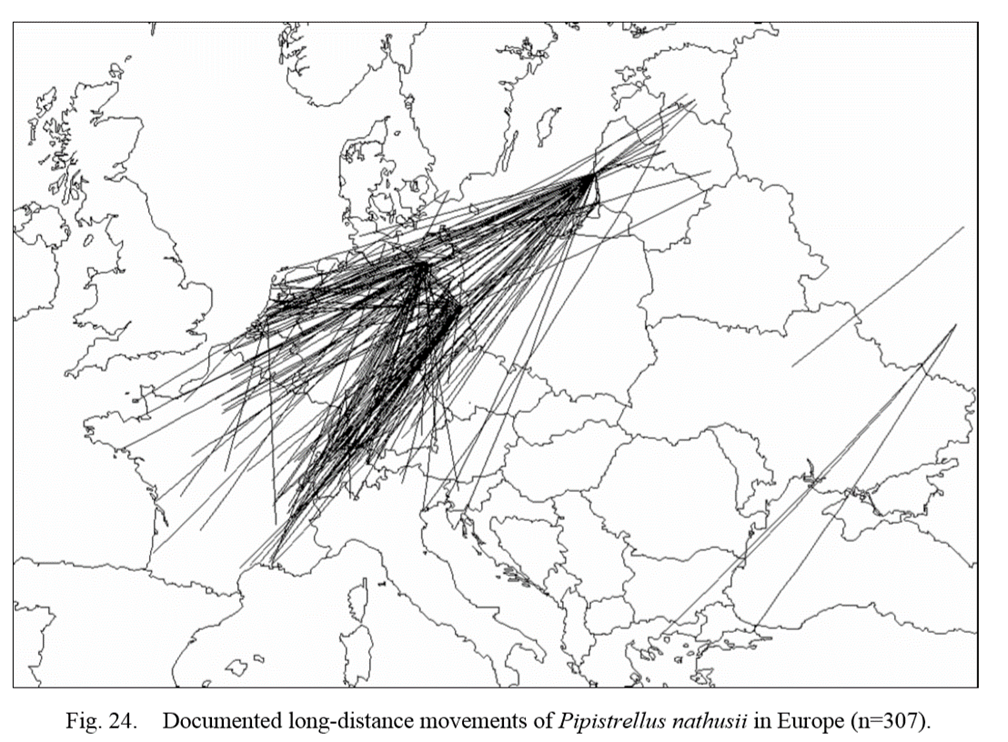
After a Nathusius’ pipistrelle ringed in Somerset was recaptured in the Netherlands in 2013 it was established that these bats do cross the Channel and a national project to find out more was started. The local bat group we belong to, the Berks & South Bucks Bat Group, joined the project in 2016. We have been out trapping bats up to ten nights each summer to try and catch Nathusius pipistrelles and ring them in the hope that they will be recaptured in the future and tell us more about their movements.
So far we have caught 19 individuals at three different sites, one bat having been recaptured by Surrey Bat Group near Runnymede, just a short distance away! Nationally over a thousand Nathusius’ pipistrelles have been caught and ringed, including six originally ringed in Latvia or Lithuania. Under the project licence we have given Merlin a ring of his own so that he might tell us more about his future movements once he is released.
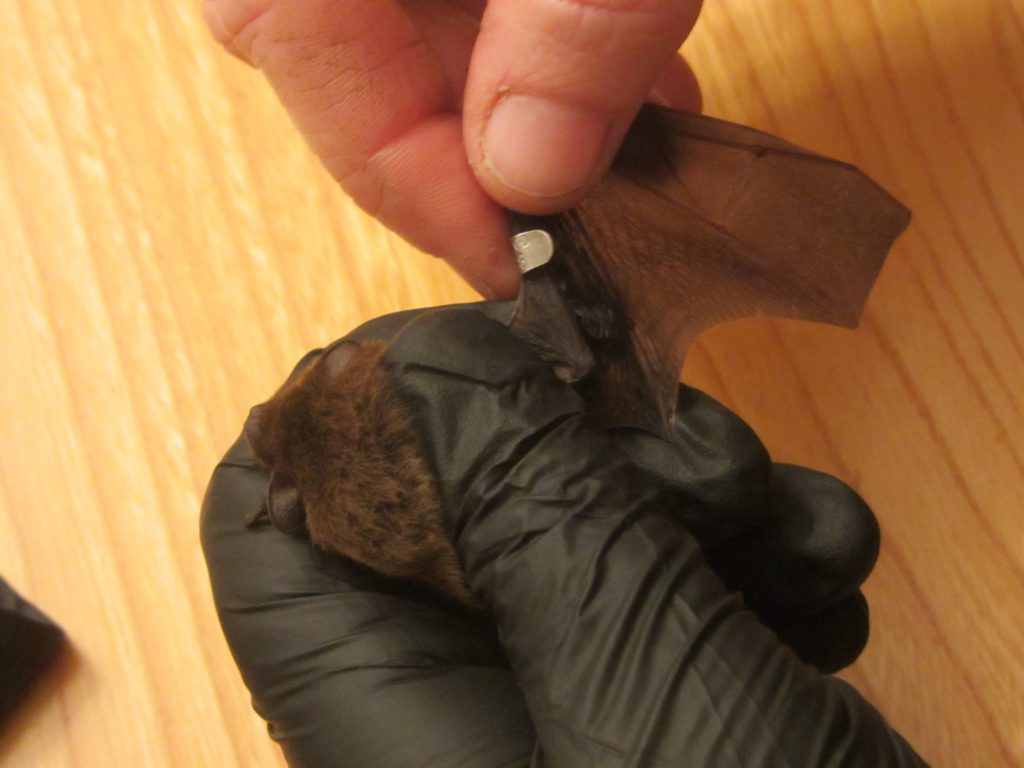
All bats in the UK are protected under UK and EU legislation in recognition of the fact they suffered a catastrophic decline in the years to 1981. There are 17 species known to breed here, all of which feed on insects. The threats bats face include loss of roosts when big, old trees are felled or barns are converted, diminishing food supply with the use of insecticides in agriculture and gardens, and loss or fragmentation of habitat when ponds are drained, new roads are built or hedgerows grubbed up. Another threat we often encounter as bat rehabilitators is the domestic cat. There is evidence to suggest that this legal protection is enabling most UK species to hold their own or even recover somewhat.
Find out what you can do to help bat conservation!
The release of Merlin
After Merlin had been wintered, rehydrated and fed to be a healthy weight, we released him on the evening of 27 February 2019. This week was unusually warm for the season, and Merlin was released in The MERL garden by Rose-Ann – sound artist Felicity Ford also popped along to record his echolocating! At first he started flying straight back to the Archive store, but then thankfully veered into the trees. Hopefully he will find other bats to roost with and – now that he is ringed – we may yet see him again!
